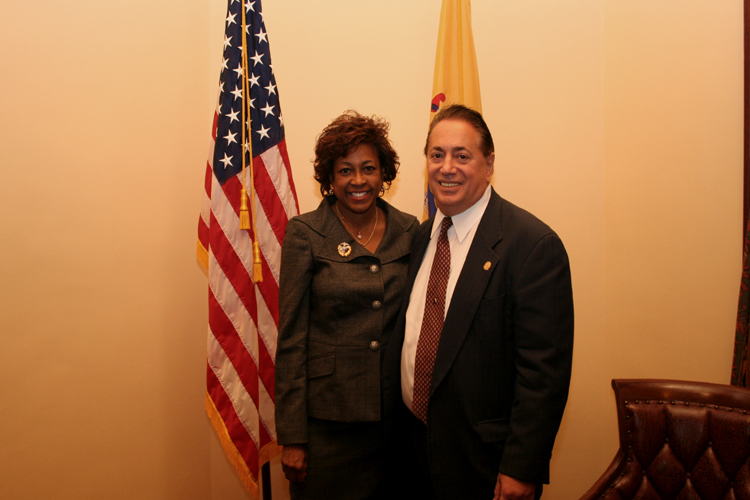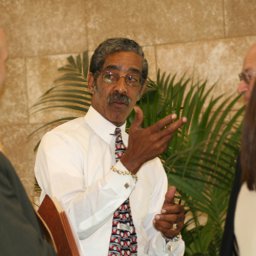
Senate Panel Approves Resolution Urging Port Authority to Address Height Restrictions at Bayonne Bridge
TRENTON – The Senate Transportation Committee today approved a measure sponsored by Senators Nicholas J. Sacco and Sandra B. Cunningham calling for a plan of action to ensure that the Port of New York and New Jersey remains a major destination point for worldwide cargo by addressing shipping clearance limitations at the Bayonne Bridge.
“Without action to address this issue, the region stands to lose roughly 270,000 jobs generated by the Port of New York and New Jersey” said Sen. Sacco (D-Bergen/Hudson). “If we don’t ease the restricted shipping access at the Bayonne Bridge, New Jersey will face a huge competitive disadvantage that would have far-reaching implications on our economy.”
The measure (SR-47), which was approved unanimously, urges the Port Authority of New York and New Jersey to formulate an engineering and funding solution to the impasse at the Bayonne Bridge while seeking financial assistance from available federal transportation programs.
“The Bayonne Bridge is critical to the region’s economic infrastructure,” said Sen. Cunningham (D-Hudson). “Given the increasingly competitive nature of the global economy, we stand to lose between $4.4 and $17.6 billion in economic activity annually if we don’t act soon. An investment in the Bayonne Bridge now will pay dividends for years to come.”
The air draft beneath the bridge varies with the tide between 151 and 156 feet. Presently, 88 percent of containerized cargo is delivered to New York and New Jersey Marine Terminals located west of the Bayonne Bridge.
With the expansion of the Panama Canal scheduled to be completed in 2014, the number of large ships requiring air clearance in excess of 151 feet will grow as more cargo is delivered directly to East Coast ports from Asia. If the bridge remains too low to accommodate these larger ships, the Port of New York and New Jersey will be put at a competitive disadvantage with ports in Norfolk, Virginia, Charleston, South Carolina, Savannah, Georgia, and Halifax, Nova Scotia for access to new Asian cargo.
In September 2009, the Port Authority of New York and New Jersey commissioned the New York District of the U.S. Army Corps of Engineers to look at the commercial consequences of and the economic benefits generated by the air draft restriction imposed by the current height of the Bayonne Bridge. The Army Corps of Engineers validated the need to increase the air clearance from 151 feet to at least 215 feet, which is the available air clearance under the Bridge of the Americas on the Panama Canal.
The resolution now heads to the full Senate for final approval. Once approved, signed copies of the resolution will be transmitted to various elected officials, including: Governor Christie; the Governor of New York; the Board of Commissioners of the Port Authority of New York and New Jersey; the President and Minority Leader of the New Jersey Senate; the Majority and Minority Leaders of the United States Senate; the Speaker and Minority Leader of the United States House of Representatives; and every member of New Jersey’s Congressional delegation.
# # #



